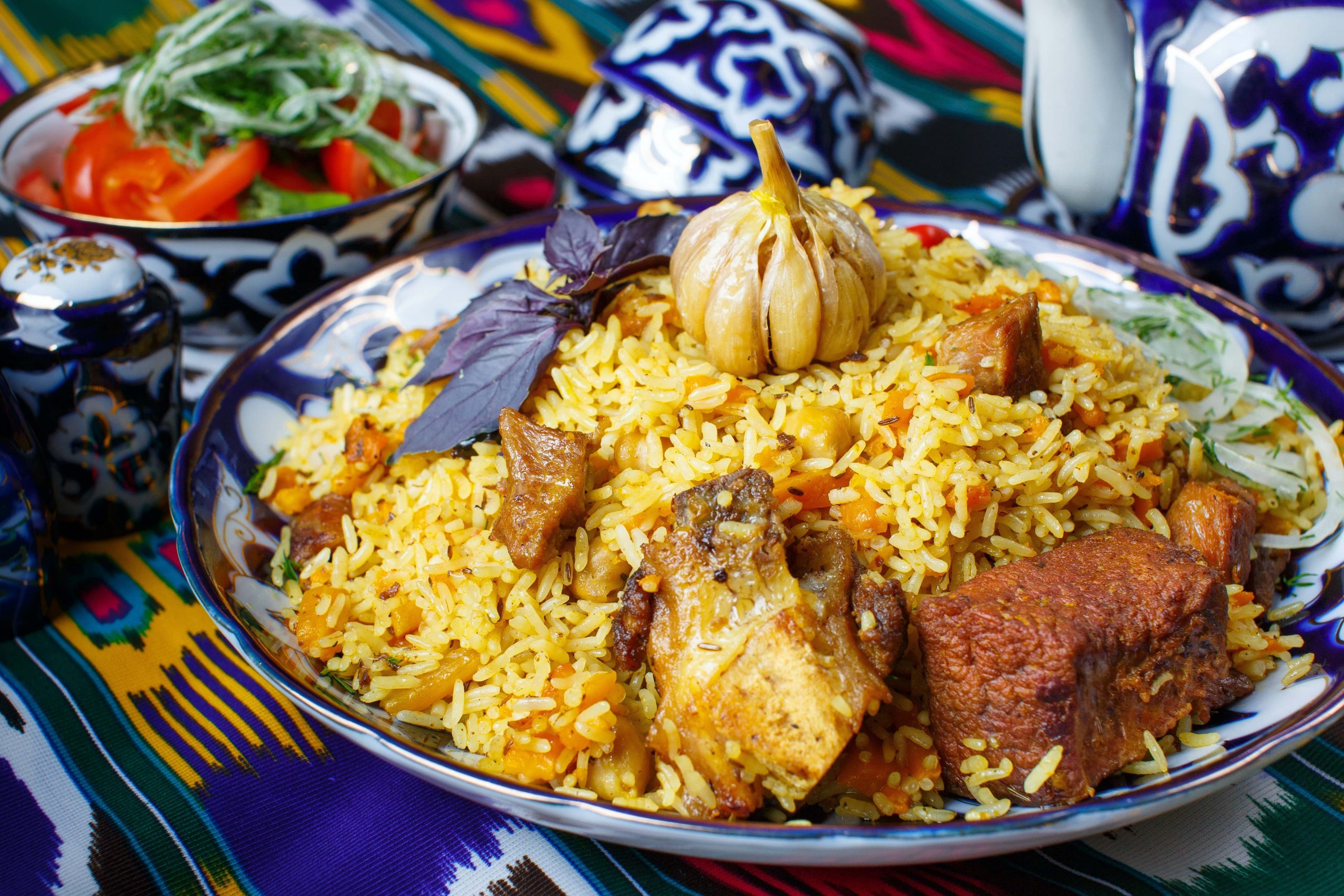
Exploring Central Asian cuisine: from traditional dishes to modern Fusion
Central Asia boasts a rich culinary history that has evolved over centuries. With influences from the nomadic lifestyles, agricultural traditions, and cultural exchanges that have shaped the region over the centuries, the flavors and cooking techniques of Central Asian cuisine have evolved to create a unique gastronomic experience. From hearty traditional dishes to inventive modern fusion, the culinary landscape of Central Asia offers a fascinating journey of tastes and textures waiting to be explored.
Traditional Dishes: The Backbone of Central Asian Cuisine
Plov (Pilaf)
Arguably the most famous dish in Central Asian cuisine, plov is a hearty one-pot meal consisting of rice, meat, carrots, onions, and a blend of spices, such as cumin, coriander, and saffron. While Uzbek plov is considered the gold standard, variations can be found throughout the region, with each country putting its unique spin on the dish. In some areas, dried fruit, chickpeas, or vegetables might be added, while in others, the dish might be topped with a fried egg or garlic.
Manti
These steamed or boiled dumplings are found across Central Asia and are typically filled with minced meat, onions, and various spices. While the fillings can vary, common options include beef, lamb, or even pumpkin. In Kazakhstan, manti are often served with a dollop of sour cream, while in Kyrgyzstan, they are paired with a spicy tomato sauce.
Shashlik
Shashlik, or skewered and grilled meat, is a popular street food and a staple at social gatherings across Central Asia. Marinated in a mixture of spices, oil, and vinegar, the meat is threaded onto skewers and cooked over an open flame, resulting in tender, smoky, and flavorful morsels. Lamb is the most traditional choice, but beef, chicken, and even fish can be used as well.
Laghman
Originating from the Uyghur people, laghman is a satisfying noodle dish that has become a staple in Central Asian cuisine. The hand-pulled noodles are served in a rich, savory broth, often accompanied by vegetables and meat. The dish varies from region to region, with some versions featuring a tomato-based sauce and others utilizing a more delicate broth.
Beshbarmak
Translating to “five fingers” in the Kazakh and Kyrgyz languages, beshbarmak is a nod to the traditional way of eating this dish – with one’s hands. Boiled meat, usually lamb or beef, is served over a bed of pasta or flatbread, accompanied by a flavorful broth. The dish is typically garnished with onions and herbs, and sometimes even with an extra serving of meat on the side.
Modern Fusion: Innovating and Elevating Central Asian Cuisine
In recent years, Central Asian cuisine has experienced a renaissance, with chefs both in the region and around the world putting their own spin on traditional dishes. This new wave of creativity has led to some exciting and delicious innovations.
New Ingredients and Flavors
Modern Central Asian fusion often involves incorporating new ingredients and flavors into traditional dishes. For example, plov might be prepared with quinoa or couscous instead of rice, while shashlik could be made with exotic meats like ostrich or even tofu for a vegetarian twist. These new combinations allow chefs to experiment with flavors and textures while still staying true to the essence of the dish.
Fusion with Other Cuisines
Another aspect of Central Asian fusion is the melding of the region’s flavors with those from other culinary traditions. For instance, a Korean-Uzbek restaurant might serve manti filled with kimchi and beef, while a Central Asian-Italian eatery could offer laghman noodles in a pesto sauce. These culinary marriages not only introduce diners to new taste combinations but also showcase the versatility and adaptability of Central Asian dishes.
Plating and Presentation
In addition to playing with ingredients and flavors, modern fusion also involves a focus on the visual presentation of dishes. Traditional Central Asian cuisine, while delicious, is often rustic and hearty. Contemporary chefs, however, are taking these dishes and reimagining them with an emphasis on aesthetics. This might involve elegantly arranging manti on a plate with edible flowers and a drizzle of sauce or creating a deconstructed version of beshbarmak, with each component artfully displayed.
Healthy and Sustainable Options
In today’s culinary landscape, there is a growing emphasis on healthy and sustainable eating. Central Asian fusion is no exception, with many chefs focusing on creating dishes that cater to these preferences. This might involve using organic, locally sourced ingredients or offering vegetarian and vegan alternatives to traditionally meat-heavy dishes. By embracing these trends, Central Asian cuisine is becoming more accessible and appealing to a wider audience.
Popular Central Asian Fusion Restaurants
Central Asian fusion has taken the world by storm, with several notable restaurants showcasing the best of this innovative cuisine:
- Navat in Almaty, Kazakhstan: This modern restaurant combines traditional Kazakh flavors with international influences, offering dishes like beshbarmak with Italian black truffle sauce and plov with Wagyu beef.
- Samarkand in London, England: Samarkand brings Uzbek cuisine to the heart of London, with menu items such as plov with quinoa and slow-cooked lamb shoulder, and manti filled with butternut squash and feta cheese.
- Kishmish in Moscow, Russia: This stylish restaurant offers a contemporary take on Central Asian cuisine, with dishes like manti with salmon and spinach, and shashlik with a choice of exotic marinades.
Central Asian cuisine is a rich and diverse culinary tradition that has evolved over centuries. From its traditional roots, the cuisine has grown and adapted to modern tastes, resulting in a fusion of flavors and techniques that are truly unique. As more and more chefs experiment with this cuisine, we can expect to see even more exciting innovations and delicious dishes to savor. Whether you’re a seasoned Central Asian food enthusiast or just starting to explore this fascinating region’s flavors, there’s no doubt that this culinary journey will be an unforgettable one.

